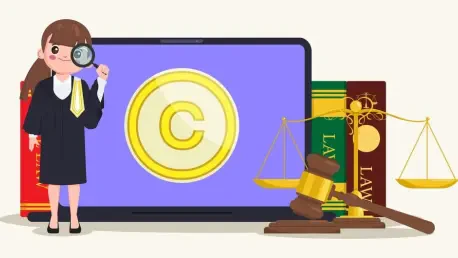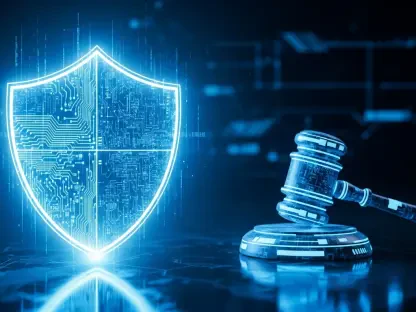Introduction to Campus Censorship via Trademark Law
Imagine a university, a supposed bastion of free thought, using legal tools not to protect its brand but to silence dissenting voices on campus, a trend that raises serious concerns about the state of free expression in academia. This alarming scenario is becoming a reality as institutions increasingly turn to trademark law to suppress student speech and activism. Specific cases at Gallaudet University and Purdue University exemplify this troubling trend, where intellectual property claims are wielded as a muzzle rather than a shield. How are these academic bodies misapplying trademark law, and what does this mean for the fundamental right to free expression in educational settings?
The misuse of trademark law to curb dissent raises profound concerns about the erosion of open dialogue in spaces meant for critical inquiry. At Gallaudet, a student group faced censorship over social media content critical of institutional stances, while at Purdue, an independent student publication was pressured to alter its identity following controversial editorials. These incidents are not isolated but signal a broader shift in how universities handle opposition, prompting a deeper examination of legal overreach in academia.
Background and Importance of Free Speech on Campuses
Universities have long been regarded as crucibles for open dialogue, where students and faculty engage in robust debate to challenge norms and foster intellectual growth. This environment hinges on the protection of free speech, a cornerstone of democratic society that allows for the exchange of controversial or unpopular ideas. Without such freedom, the academic mission risks being undermined by conformity and suppression.
Trademark law, traditionally designed to prevent consumer confusion by protecting brand identity, is being repurposed in ways that stray far from its original intent. Instead of safeguarding against misrepresentation, some institutions exploit these legal mechanisms to silence criticism or activism that they find inconvenient. This distortion of purpose not only misapplies the law but also threatens the integrity of campus discourse.
The societal stakes of protecting student expression are immense, particularly when it comes to contentious issues like political conflicts or social justice. When universities overstep their authority to control narratives, they create a chilling effect, discouraging individuals from speaking out. Such institutional overreach jeopardizes the role of higher education as a space for fearless inquiry and must be critically addressed to preserve academic freedom.
Case Studies and Analysis of Trademark Misuse
Gallaudet University and Students for Justice in Palestine
At Gallaudet University, the administration targeted the Students for Justice in Palestine (SJP) chapter over its social media presence, specifically the Instagram handle @sjpgallaudet. The university filed a trademark infringement complaint with Meta, alleging unauthorized use of its name, in an apparent effort to silence the group’s vocal protests against the war in Gaza. This action followed the group’s use of slogans and content that the institution deemed objectionable, revealing a clear intent to suppress rather than protect.
Analysis of this case shows a striking lack of evidence that the public would confuse the SJP account with an official university platform. The account’s critical stance toward Gallaudet’s policies made its independent nature evident, undermining any legitimate trademark concern. Instead, the move appears to be a calculated strategy to stifle dissent under the guise of brand protection, highlighting a dangerous misuse of legal tools.
This incident at Gallaudet underscores a broader pattern of administrative behavior aimed at controlling narratives rather than fostering dialogue. By leveraging trademark claims, the university sidestepped direct confrontation over the content of the speech, opting for a legal tactic that obscures its true motives. Such actions set a troubling precedent for how institutions might handle opposition in the future.
Purdue University and Independent Student Media
Purdue University took a similar approach when it pressured The Exponent, an independent student newspaper, to remove “Purdue” from its web address. This demand came on the heels of an editorial advocating for the protection of pro-Palestinian activists’ identities, a topic that evidently displeased the administration. The university framed its action as a defense of its trademark, yet the context suggests a different motivation.
There is little indication that the public would mistake The Exponent for an official Purdue outlet, especially given its history of independent reporting. Trademark law’s purpose—to prevent confusion—was not served by this intervention, pointing instead to an attempt to curb journalistic freedom on sensitive issues. This case reveals how intellectual property claims can be weaponized to target content rather than identity.
The pressure on The Exponent illustrates the vulnerability of student media in the face of institutional power. When universities use legal mechanisms to challenge editorial independence, they undermine the critical role of journalism in holding authority accountable. This incident serves as a cautionary tale about the potential for trademark law to become a tool of censorship rather than protection.
Role of External Advocacy and Outcomes
External organizations have played a pivotal role in countering these instances of censorship. The Foundation for Individual Rights and Expression (FIRE) intervened in both the Gallaudet and Purdue cases, advocating for the protection of free speech. In the Gallaudet situation, FIRE sent a letter asserting that the SJP’s controversial slogan, while divisive, falls under First Amendment protections, challenging the university’s overreach.
Meta also contributed to a significant outcome by reviewing Gallaudet’s trademark claim against the SJP account and reinstating it, finding no violation of guidelines. This decision affirmed that the university’s complaint lacked merit and highlighted the importance of third-party oversight in disputes involving institutional power and individual rights. It provided a crucial check on administrative attempts to silence dissent.
These interventions by FIRE and Meta underscore the necessity of external entities in safeguarding free expression when internal university policies fail. Their involvement not only corrected specific injustices but also sent a broader message about the limits of trademark law in academic contexts. The outcomes emphasize that advocacy and independent review are essential to maintaining balance between institutional interests and student rights.
Reflection and Broader Implications
Reflection on Institutional Behavior
A stark hypocrisy emerges when comparing universities’ public commitments to free speech with their actions to suppress it through legal maneuvers. Many institutions, including Gallaudet, tout policies that champion open dialogue, yet their responses to dissent often contradict these principles. This disconnect between rhetoric and reality erodes trust and calls into question the sincerity of academic missions.
Addressing this issue poses significant challenges, as the intent behind trademark claims is often obscured by seemingly neutral legal justifications. Discerning whether a university is genuinely protecting its brand or merely silencing criticism requires scrutiny of context and outcomes. Without transparency, such tactics risk becoming normalized, further entrenching institutional control over campus voices.
The pattern of behavior exhibited by these universities suggests a preference for image management over intellectual freedom. When legal tools are used to avoid direct engagement with controversial ideas, it signals an unwillingness to grapple with the complexities of open discourse. This avoidance undermines the very purpose of higher education as a forum for challenging and refining perspectives.
Broader Implications for Campus Discourse
The misuse of trademark law casts a long shadow over student activism and independent journalism, creating a chilling effect that stifles expression. Fear of legal repercussions may deter individuals from engaging in advocacy or reporting on critical issues, diminishing the vibrancy of campus dialogue. This suppression directly threatens the diversity of thought that universities are meant to nurture.
If this trend spreads to other institutions, the academic environment as a whole could suffer. The precedent set by Gallaudet and Purdue may embolden additional universities to adopt similar strategies, prioritizing control over debate. Such a shift would fundamentally alter the role of higher education, transforming it from a space of inquiry into one of conformity.
Beyond immediate campus impacts, the broader cultural implications are concerning. Universities shape future leaders and thinkers, and restricting discourse at this level could ripple outward, affecting societal attitudes toward free expression. Protecting the integrity of academic spaces is thus not just an institutional concern but a democratic imperative that demands attention.
Conclusion and Call for Vigilance
Reflecting on the cases at Gallaudet and Purdue, it becomes evident that universities have misused trademark law to censor student speech, posing a direct threat to free expression in academic settings. These incidents exposed a troubling willingness to prioritize institutional image over constitutional rights, despite flimsy legal justifications. External advocacy from groups like FIRE and decisions by Meta proved crucial in pushing back against this overreach, highlighting the gaps in internal protections.
Looking ahead, actionable steps emerge as essential to prevent further erosion of campus discourse. Developing clearer guidelines on the application of trademark law in educational contexts stands out as a necessary reform to curb misuse. Additionally, strengthening independent oversight mechanisms could ensure that universities face accountability when they overstep boundaries.
Beyond policy changes, fostering a culture of vigilance among students, faculty, and external stakeholders is identified as a vital strategy. Encouraging active monitoring and advocacy for First Amendment rights could deter future abuses. Ultimately, preserving the university as a space for fearless debate demands sustained effort and collaboration across all levels of the academic community.









